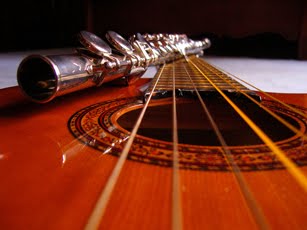
Some Catholics question, if not frown, upon this continual indulgence to a vow that is supposed to promise fortune, healing, salvation and even invincibility. The simple object of the tradition is to touch the slightly-burnt wooden image of the Nazarene and to claim whatever petitions one may have before God. In spite of admonitions by priests themselves against adhering to such an undeniably self-oriented devotion, more and more devotees flock to the procession.
Prominent personalities, helped by media’s “objective” coverage, have aided in propagating this notion which, in essence, revives ancient pagan idolatrous practices in all their colorful and hysteric qualities.
Many assume that the concept of a feast in honor of a patron saint began during the Spanish era. But this overlooks historical facts. Even before the colonizers arrived, settlers in these islands had already practiced a form of religion which involved the worship of wooden images and the spirits that roamed in nature.
Babaylans or priestesses led ancient rites that synchronized with the rhythms of nature and human life – harvest time, births, weddings, deaths and even battles. Thus, the May fertility dances of Obando, Bulacan for Sta. Clara de Assisi had been performed to honor idols even a century before the first colonizers arrived.
The Spanish missionaries made their task easier by not eliminating the ethos that the islanders had evolved throughout the millennia. They merely incorporated those practices into the Christian context – replacing the anitos with the Sto. Nino, images of Virgin Mary, Christ and the saints. Amulets were never banned or condemned but allowed to flourish and to extend into the use of religious relics and symbols as sources of perceived powers. Hence, not a few today use a literal cross or the hand-drawn sign of the cross as protection against evil and sin. The communion host at times becomes a priced amulet of a fanatic believer as it presumably gives possession of the very “flesh” of Jesus.
In the mind of an untrained Christian, such folk beliefs and concepts can lead to wild beliefs and practices; and they often do. Yet Isaiah prophesied against such misdirected worship in unpleasant terms. “Idols of wood”, to him, were not just an abomination to God and an affront to His majesty; they were an insult to the intelligence of humans. How can a lifeless object help a living person? How can it heal the sick or raise the dead? How can it help a starving person?
People may readily say it is an extension of one’s faith in Christ. And that faith is the one that works in one’s devotion to the object of worship. But valid as that may seem even for many educated Filipinos, we know that the only object of our worship is God and His Son, Jesus, Who reign in heaven. Being spirit and invisible that God is, how can we use a corruptible object to replace Him.
Do we need physical images to help us imagine God’s majesty? Like architecture and other works of art like Michelangelo’s Pieta or Da Vinci’s Last Supper? But these objects merely recreate events and not personages. A statue of Christ carrying a cross, whether in white marble or in polished mahogany, pictures an event in the past. Is it possible to worship an event? Are there some people who commemorate 1986 EDSA Revolution as if it were the creation itself of the Universe? Do we look at the crucified Christ then as a finished act or do we look at it as a recurring event that keeps reminding us of our sins and the forgiveness of those sins? Where is freedom in that sense if we keep going back to what has passed? Are we truly new creatures in Christ or the same old sinful ones being recycled over and over again?
On the other hand, can we not worship Christ simply in our hearts and thank Him that He is in heaven beside the Father and ruling over the Universe? The Jews did so and unburdened themselves from the practices of idolaters who once surrounded them in
Have we put an object of worship above God’s laws or above God Himself? Does the effort of stepping on another person’s toes or not minding what happens to others as long as you can touch an idol really please God? In another sense, is it really all that necessary? If so, for what distorted spiritual or social purpose that gives justification to plain selfishness? If not, why do it at all?
The idolaters of old defended their practices and beliefs. Apostle Paul was almost stoned to death for having convinced devotees of the goddess Diana to forsake their idol which was also their source of livelihood. For sure, many will come to the aid of the Black Nazarene which in all certainty cannot care a bit about all the attention it receives for it is an object of art not unlike Luna’s La Spolarium. It will not speak for or against the devotees for it is a mute witness of the folly of idolatry. It will not condemn either the priests who tolerate it or the critics who discredit it because it knows neither right nor wrong much like a child that does not think. It will not feel pain, shame or the heat of the sun because it is not made of flesh like the devotees who have surrendered their faith to it and not to the living God Who created them and fashioned them in His divine image.
We try to fashion (or imagine) our God according to the image we have of Him -- some in wood, some in marble and some in colorful images on canvas or paper. Others don’t have to fashion Him at all for they have not (and will never have) the genuine image or the available tools with which to begin that process. They then fashion God in the way they live and the way they treat their family and their neighbors. They end up living righteous lives. As Jesus says, “Come, Follow Me.” That -- is true and simple worship.
Idolatry, on the other hand, aims to divert our attention from the true God and His genuine way of living. Idolatry keeps us focused on death and suffering. Idolatry burdens us with more obligations that even go beyond normal or civilized human behavior. Idolatry aims to bring us back to darkness and ignorance and not into the light and the knowledge of the true character of Christ Who alone can set us completely free.
A nation that remains unable to remove idolatrous practices – and there are many still in the
(Photo above: Inside Quiapo Church in Manila, home of the Black Nazarene.)


